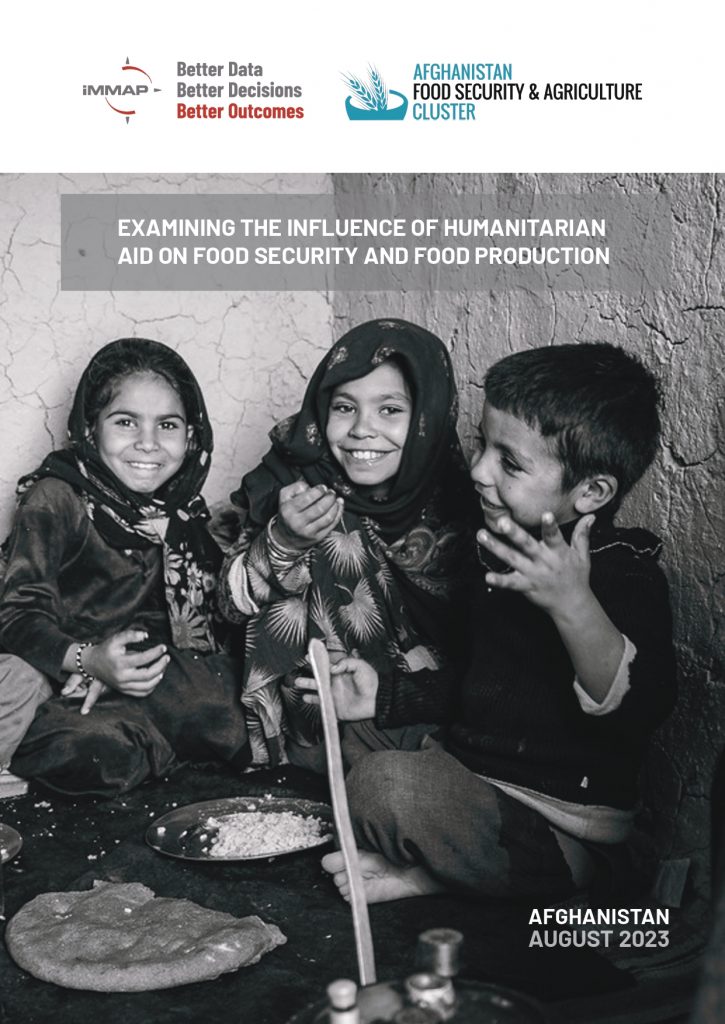Afghanistan: Examining the Influence of Humanitarian Aid on Food Security and Food Production
The report examines the impact of humanitarian aid on food production and consumption in 4 provinces classified as food insecure, according to the results of the 2022 IPC on acute food insecurity.
The report examines the impact of humanitarian aid on food production and consumption in 4 provinces classified as food insecure, according to the results of the 2022 IPC on acute food insecurity.
Findings from this study indicate that households relying on humanitarian assistance (cash-inkind-vouchers) showed a stronger tendency to spend on food, irrespective of the aid modality, with approximately 89% of households reported utilizing the provided humanitarian assistance (cash-vouchers) on food purchases. The study also revealed cash received via HFA was used for a variety of needs aside from food related expenses, which reechoes the cross-cutting value of cash transfers in humanitarian assistance. The majority of recipients (55%) reported increased food consumption due to humanitarian assistance, with 24% strongly agreeing. On food production, 18.94% strongly agreed and 58.39% agreed that the agricultural package boosted their food production. These findings underscore the importance of targeted assistance for addressing food consumption and production. The report also highlights the compelling preference for cash assistance modality throughout different sections, indicating its prominent role in humanitarian assistance as indicated in the overall findings and recommendations.
Findings from this study indicate that households relying on humanitarian assistance (cash-inkind-vouchers) showed a stronger tendency to spend on food, irrespective of the aid modality, with approximately 89% of households reported utilizing the provided humanitarian assistance (cash-vouchers) on food purchases. The study also revealed cash received via HFA was used for a variety of needs aside from food related expenses, which reechoes the cross-cutting value of cash transfers in humanitarian assistance. The majority of recipients (55%) reported increased food consumption due to humanitarian assistance, with 24% strongly agreeing. On food production, 18.94% strongly agreed and 58.39% agreed that the agricultural package boosted their food production. These findings underscore the importance of targeted assistance for addressing food consumption and production. The report also highlights the compelling preference for cash assistance modality throughout different sections, indicating its prominent role in humanitarian assistance as indicated in the overall findings and recommendations.
- Afghanistan
- Report
- August 2023

